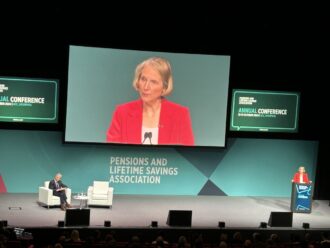Stocks and bonds faced some upheaval in early January as markets pulled back on long-held expectations of interest rate cuts while inflation saw an unwelcome return. The FTSE100 saw its deepest dip since August. But the fall went across the Atlantic – always a bad sign – hitting the S&P500 and the Nasdaq.
The sell-off followed suggestions from European Central Bank president Christine Lagarde that market expectations of a rate cut were “not helping” but offered some light by saying a cut may come by the summer.
Talk about mixed messages. Inflation also jumped to 4% in the UK during December. Hardly part of Rishi Sunak’s plan for an election year. Investors are pulling back on an expected Bank of England rate cut. But where does this unexpected turn leave investors?
Julian Howard, lead investment director of multi asset at GAM Investments, notes how the start to the year for stocks and bonds has not been a clear continuation of where we left o at the end of 2023.
“The Fed declared in December that the rate cycle was done and the not unreasonable assumption was that stocks would keep rallying and bond yields sink as growth and inflation expectations were tempered,” he said.
Two factors have contributed to this trend, Howard said. “Firstly, stocks were already expensive and priced fairly close to perfection. The equity risk premium on the S&P500 is still marginal. The forward earnings yield on that index is 4.5% but the 10-year US treasury yield is 4.2%,” he added.
Investors are, therefore, Howard said, only getting 0.3% more than the risk-free rate, naturally tempering the prospects of a runaway rally. “For more progress to be made from here, the fourth quarter earnings season would have to be spectacular, or bond yields would have to sink,” he said.
This brings us to the second factor. “Bond yields are not falling, because inflation and growth expectations have not been significantly revised down. The final mile of the current inflation fight could be somewhat prolonged,” Howard added.
Inflation spectre
It is a point shared by Simon Nichols, multi-asset manager at Newton Investment Management. He said that monetary policy continues to be a key driver of returns in bonds and equities, but the spectre of inflation also haunts the outlook.
“The future path of inflation will be key in determining the extent and timing of any relaxation in policy and markets have moved aggressively to anticipate a looser policy environment over the coming year,” he said.
Uncertainty remains around whether inflation “can be reduced from a normalisation of supply conditions” or if a “cooling in demand must also play its part”, Nichols added.
For now, investors are content that a ‘soft landing’ is in prospect, Nichols said. “Geopolitical issues continue to have the potential to disrupt this pathway via commodity-price volatility, supply-chain logistics disruption and trade sanctions, among other factors,” he added.
There is an additional issue wrapped up in this. “While lower interest rates and bond yields ameliorate a key pressure on consumer and corporate spending power and support asset valuations, volatility in key financial metrics is unhelpful for certainty and long-term decision making,” Nichols said.
Political problems
Furthermore, as we note on page 16, politics is likely to rise up the agenda for investors as the year progresses, with elections taking place in many regions, not least in the US.
“Policy emphasis is likely to affect the outlook for several sectors exposed to partisan spending outlooks,” Nichols said. “We remain focused on those companies which we believe have more resilient long-term earnings profiles and attractive end-market outlooks.”
But there continues to be debate surrounding the soft landing scenario, which adjusts the outlook somewhat.
Anthi Tsouvali, multi-asset strategist at State Street, said: “We find the chances of achieving soft-landing slim. Higher interest rates mean it is much harder and more expensive to get access to financing.”
Therefore, Tsouvali added: “Higher for longer will likely progress in a way that poses additional threat to corporate margins, followed by a more serious rationalisation to employment.”
Such a scenario, says Tsouvali’s colleague Marija Veitmane, head of market research at State Street Global Markets, “means that equity multiples and earnings growth expectations are too high warranting more cautious equity allocation.
“Analysts’ expectations that we’ve seen reveal a trough in earnings and are forecasting a strong reacceleration, not just in the US, but in ex-US markets as well seems overly optimistic and will have to re-adjust lower,” Veitmane said.
Mike Coop, chief investment officer of Morningstar Investment Management Europe, sums up the situation: “Over the past year markets have swung from gloom to boom as growth and inflation turned out better than expected, after the biggest rise in rates for decades.”
Coop added that there are scenarios that could lead to “inflation surprises and so investors should be prepared for a range of outcomes”.
“Investors are best served by staying focused on longer-term investment strategies designed to meet their goals and filter out short-term swings in market prices and investor sentiment,” Coop said.





Comments